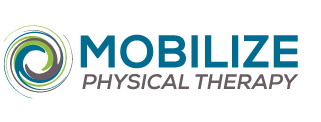Office Jobs where you are stuck at the computer all day can become a hidden factor affecting your health leading to aches, pains, and injury. Remaining stationary for long periods of time can result in poor circulation in the joints and muscles, as well as an imbalance of strength and flexibility – leading to muscle strain. However, never fear your friendly neighborhood Physical Therapist is here to give you some tips and suggestions to help you out while you’re stuck at your desk.

First off, it’s a good idea to get your muscles moving several times throughout the day, even if it’s for just a few seconds. It can be as easy as taking a moment to roll your shoulders back, and turn your head from side. Stretching out your arms and legs as well as taking walks throughout the day can keep your blood flowing and your mind refreshed. Regular walks can also improve focus during a long work day. I personally take a moment to do twenty jumping jacks every hour to keep my body moving and grooving while i’m stuck at my desk.
Don’t overlook your chair and how it can benefit your health as well. A good desk chair should provide lumbar support as well as have an adjustable seat base allowing you to sit up straight. Similar to the seat base, the arms and hight of the chair should be adjustable. You want to be able to slide your knees under the keyboard tray or desk. For functional mobility the chair should also be able to roll and twist.
When it comes to your computer you want the monitor directly in front of you, keeping the top of the monitor at eye level. The keyboard should be at a height that allows your elbows to bend slightly more than 90 degrees. Avoid having to reach for the keyboard, or having to raise your shoulders because the keyboard is too high.
If you are experiencing pain that seems to persist, or is not relieved by these simple office tips, it might be a good idea to seek the advice of a physical therapist. A treatment plan to strengthen the body can often relieve pain and improve mobility.
“Workplace Wellness.” Move Forward PT. American Physical Therapy Association, n.d. Web. 4 Nov. 2015.

